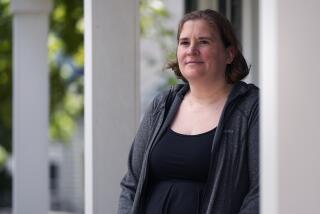School lunchboxes: How to make them eco-friendly?
- Share via
I can’t hear the word “plastics” without thinking of “The Graduate.” When the film was released in 1967, plastics may have represented the future, but today we’re faced with the past — what to do with all those used wrappers, bottles and baggies.
It turns out a lot of that plastic is finding its way into the cafeteria trashcan. The Environmental Protection Agency estimates that the average school-age child generates 67 pounds of lunchtime waste each year, much of which comes from packaging. That translates to an estimated 110-million-plus pounds of waste a year in Los Angeles County schools alone. We spend a good deal of time talking about what goes into our kids’ lunchboxes — the organic, the sustainable, the healthful. But what about the lunchboxes themselves?
Because I am what my friends politely call “obsessive,” I spent hours researching containers for my preschooler’s lunch, polling parents about practicality and e-mailing manufacturers about BPA, or Bisphenol A, a chemical that can be found in many containers and that some researchers believe may have adverse health effects.
The conclusion? Most eco-friendly containers are a pain in the neck. Many can’t be put in the microwave, or they require hand-washing. What working parent has the time? And so, I began my quest for the ultimate lunch solution: low-maintenance, waste-free containers that were reusable, functional and BPA-free. No plastic baggies.
I didn’t know that packing a 2-year-old’s lunch would produce so much angst.
I already had purchased a $12 L.L. Bean lunchbox — almost identical to the model I carried some 30 years ago. A representative from L.L. Bean’s assured me that the lining was BPA-free. Although I probably could have found some irreproachably eco-friendly lunch bag made of organic hemp and tied with ribbon woven from fallen banana leaves at a fair-trade local farm, sometimes the greener option is to reuse what you already have. The good news about the polyurethane-coated nylon exterior of my L.L. Bean lunchbox: It’s free of phthalates, which have been linked to hormone problems in children. It’s also durable, which means I won’t toss it into the landfill after a couple of uses.
“People don’t think about the fact that it’s equally as bad to throw out decent products in order to upgrade to slightly better products,” says Dana Kellin McCrane, who designs jewelry under her Dana Kellin label. A mother of two, McCrane co-chaired a green team at her children’s Oakwood School in North Hollywood last year to raise awareness about packing waste-free lunches. “Our green team does the research on products and presents the info to the other parents. We found that parents really want to do this.”
But the products have to work for kids too, she adds. Can your child open the container? Is it spill-proof?
One company that rates highly on McCrane’s list is Lunchbots, which sells food-grade stainless-steel containers that are dishwasher safe. I had seen these on the shelves at Whole Foods but hadn’t given them a second thought until I was sitting down to lunch in Little Tokyo, staring down at a beautifully arranged bento box. Could I find a miniature version for my son?
Several eco-friendly, bento-inspired products are on the market, including PlanetBox, Laptop Lunches and Goodbyn. Even though their plastic was BPA-free, I decided stainless steel seemed the most durable option.
The winner: a Lunchbots Duo compact stainless-steel box with a divider. It fits perfectly into his lunchbox alongside his Sigg water bottle, cloth napkin and stainless utensils.
I use one side of the Lunchbots Duo for a main course, such as a sandwich, and on the other I use two nonreactive silicone 2-ounce pinch bowls to hold fruits, veggies or cheese cubes. To keep food from spoiling, I tuck a reusable Kids Konserve nontoxic ice pack with a sweat-free cover made from recycled plastic bottles in the inside mesh pocket of the lunchbox.
Reusable silicone muffin cups also work as dividers. They are dishwasher safe and won’t leach chemicals into your food when heated. I like baking a batch of whole wheat macaroni and cheese in these cups for individual portions that can be frozen and safely reheated.
“Packing waste-free is not about spending a lot more money,” says Paige Rodgers, co-founder of Fabkins, which produces organic cotton napkins designed for kids. “Look at what you already have, think about buying in bulk to reduce package waste, and you’re saving both money and the environment.”
In fact, looking around your home is probably the greenest path to packing waste-free.
“Bandanas make great napkins,” says Sara Stein, co-owner of the S.PR fashion public relations firm and mother of two. “I am not about what I need to go out and buy but more about what is already in my house that I can reuse.”
At her daughter’s preschool, Silverlake Independent Jewish Community Center, packing a waste-free lunch is recommended but not mandated. Stein says she’s not militant about plastics but tries to take a practical approach.
“There are some mornings when I don’t have time to pack lunch,” she says. “I might stop by the grocery store and ask them to fill up my daughter’s thermos with mac ‘n’ cheese, but that’s one less plastic container used.”
Click here for Heather John’s shopping list.


